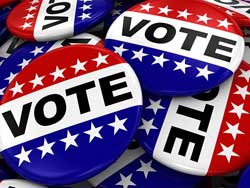A series of cases, set forth in the following examples, submitted for opinion, raise substantially the same question and are consolidated in this opinion for general guidance.
Example 1-The following two-column paid advertisement was published in the classified section of a local telephone directory:
CONSULTING STRUCTURAL ENGINEERS
(Doe and Roe)
- SOUND LOW COST STRUCTURES START WITH GOOD DESIGN
-
Building Design
Appraisal
Cost Estimates
Heavy Machine
Foundations
Vibration Control
Soil Investigations
Safe Floor Loads
Expert Testimony -
Industrial and Commercial Building Design
We may be able to save YOU future worries and needless expense through proper
Design and Supervision of Construction
Call us at (telephone number)
address
Example 2-The following 7-1/2" x 7-1/2" display advertisement appeared in a daily newspaper of general circulation:
JOHN A. DOE & ASSOCIATES
Engineers
Somewhere, U.S.A.
We are proud to have contributed our engineering services in the realization of the following mileposts in the growth of our native city:
Sewage Treatment Plant
Sewage Lift Stations
Sanitary Sewer System
Water Storage Tanks
Drainage and Raw Water Supply
Street Resurfacing Program
Avenue Paving and Sewers
River Plaza Parking Facility
Progress Through Engineering Is Our Only Product
Example 3-A full-page advertisement of a nationally known manufacturing company, in a trade magazine with primary circulation to engineers and the construction industry, featured statements and pictures naming and portraying the consulting engineering firm which had designed certain structures utilizing the product of the manufacturer. It is assumed that the engineering firm consented to the use of its name and pictures of certain of its engineering personnel and designed structures.
While each of these cases is different from the others, they all raise the basic question of whether professional engineers may advertise their services, and, if so, the limitations or restrictions which may apply.
Section 2-Read by itself, Section 2 impliedly authorizes an engineer to advertise his work or merit by putting general limitations on the type of advertising which may be employed. Rule 5 specifically recognizes the right of an engineer to advertise and spells out in more detail additional restrictions and limitations. There is no question that the engineering firms used advertising in all of the examples cited. The first and major restriction of Section 2 is that the advertisement must not be "self-laudatory." In other words, the engineer's advertisement may not praise himself or his work. The further language of Section 2 with reference to "conduct or practice likely to discredit or do injury to the dignity and honor of his profession" relates to the form and tenor of advertising. Rule 5-Rule 5 dictates that only "circumspect" advertising may be employed, meaning that it must be prudent and discreet. Rule 5 is more explicit in stating that the media to be employed should be limited to that necessary to reach potential clients and that the media shall be dignified and reputable. Finally, the advertising itself must be limited to fact and may not tend to give the impression, directly or indirectly of discrediting or displacing another engineer.
Example 1- The statement, "We may be able to save YOU future worries and needless expense through proper Design and Supervision of Construction" is boastful, self-laudatory, and implies that the firm can render a professional service not available from others. Therefore, it is obviously not circumspect or discreet, or dignified. The words also give an impression of discrediting other engineers by using the word, "We."* The quoted language is not a statement of fact but rather a claim.
Example 2- The statement, "We are proud to have contributed our engineering services . . ." is objectionable for the same reasons stated under Example 1. But if it were worded similar to the following, "We have furnished engineering services in connection with the following projects in this city," it would be unobjectionable. The slogan, "Progress Through Engineering Is Our Only Product," is objectionable because it can be read as "Progress Is Our Only Product," which is not a statement of fact. However, a slogan such as "Engineering Is Our Only Service," if true, would be unobjectionable. Engineering is not considered as a "Product." The above discussion relates only to the content of the advertisement and not its size, type or the media in which it appeared.
Example 3- By allowing the use of the name of the engineering firm, the firm has accepted a benefit from the manufacturer which might tend to influence its impartial judgment in future engagements. Therefore, it is a practice which is ". . . likely to discredit or do injury to the dignity and honor of (the) profession." (Section 2, Canons) Section 16 and Rule 27, while not entirely applicable, indicate that their spirit is being violated in that it creates a situation in which there might be a conflict of interest. The practice of using pictures of firm members under these circumstances also raises a question of propriety and dignity. There is no objection, however, to having a proper credit line for the work of consulting engineers on a particular project in a company-sponsored advertisement; such credit lines are, in fact, encouraged as a proper recognition for the professional services of the consulting engineer.
Note: The following Code sections no longer exist:
Canons of Ethics, Section 2- "He will not advertise his work or merit in a self-laudatory manner and he will avoid all conduct or practice likely to discredit or do injury to the dignity and honor of his profession."
Canons of Ethics, Section 16- "He will not accept commissions or allowances, directly or indirectly, from contractors or other parties dealing with his clients or employer in connection with work for which he is responsible."
Rules of Professional Conduct, Rule 5 -"Circumspect advertising may be properly employed by the engineer to announce his practice and availability. The form and manner of such advertising shall satisfy in all respects the dictate and intent of the Canons. Only those media shall be used as are necessary to reach directly an interested and potential client or employer, and such media shall in themselves be dignified, reputable and characteristically free of any factor or circumstance that would bring disrepute to the profession or to the professional using them. The substance of such advertising shall be limited to fact and shall contain no statement or offer intended to discredit or displace another engineer either specifically or by implication."
Rules of Professional Conduct, Rule 6-"Telephone listings shall be limited to name, address and telephone number under each branch listing in which he qualifies."
Rules of Professional Conduct, Rule 27-"He will not accept financial or other considerations, including free engineering designs, from material or equipment suppliers for specifying their product."
Rules of Professional Conduct, Rule 49-"It shall be considered ethical for an engineer to solicit an engineering assignment, either verbally or written. Such solicitation may be in the form of a letter or a brochure setting forth factual information concerning the engineer's qualifications by training and experience and reference to past accomplishments and clients."
The three advertisements are unethical to the extent indicated and for the reasons given.


 Volunteering at NSPE is a great opportunity to grow your professional network and connect with other leaders in the field.
Volunteering at NSPE is a great opportunity to grow your professional network and connect with other leaders in the field. The National Society of Professional Engineers (NSPE) encourages you to explore the resources to cast your vote on election day:
The National Society of Professional Engineers (NSPE) encourages you to explore the resources to cast your vote on election day: